Asian desserts are more than just sweet treats; they represent a celebration of culture, tradition, and creativity throughout the vast continent. Each region boasts unique flavors and textures shaped by local ingredients and historical practices. From the delicate sweetness of Japanese mochi to the rich, creamy layers of Thai mango sticky rice, Asian desserts offer a delightful array of options sure to please anyone with a sweet tooth. The beauty of these desserts lies in both their flavors and their artistic presentation. Many are crafted with an artistic touch, making them as visually appealing as they are delicious.
As I embarked on my culinary journey through Asia, I quickly discovered that desserts in this vast continent are not just sweet treats; they are a celebration of culture, tradition, and creativity. Every region has its distinct tastes and textures, shaped by local ingredients and historical traditions. From the delicate sweetness of mochi in Japan to the rich, creamy layers of mango sticky rice in Thailand, Asian desserts offer a delightful array of options that can satisfy any sweet tooth.
My first encounter with these desserts was during a trip to a bustling night market in Taiwan, where the air was filled with the enticing aroma of freshly made treats. I remember being overwhelmed by the choices, but I knew I was in for a sweet adventure. The beauty of Asian desserts lies not only in their flavors but also in their presentation.
Many of these treats are crafted with an artistic touch, making them as visually appealing as they are delicious. I recall my first taste of a beautifully arranged plate of Vietnamese chè, a colorful dessert made with beans, fruits, and coconut milk. Each spoonful was a burst of flavor and texture, and I found myself savoring every bite while marveling at the vibrant colors.
This experience ignited my passion for exploring the diverse world of Asian sweets, and I’ve been on a quest to try as many as possible ever since.
Table of Contents
Traditional Asian Desserts
The Significance of Mooncakes in Chinese Culture
During the Mid-Autumn Festival in China, mooncakes are a traditional treat that signifies togetherness and balance.I recall attending a festival where families gathered to share these round pastries filled with lotus seed paste or red bean paste. The experience was not just about indulging in the sweet treat; it was about connecting with loved ones and honoring traditions that have been passed down through generations.
Sweet Celebrations in India
In India, sweets like gulab jamun and jalebi are integral to celebrations and festivals. I had the pleasure of trying homemade gulab jamun at a friend’s Diwali party, where the soft, syrup-soaked balls melted in my mouth. The joy on my friend’s face as she shared her family recipe made the experience even sweeter.
A Connection to the Past
These traditional desserts are often steeped in stories and memories, making each bite a connection to the past. They are a way to honor our heritage and cultural traditions, and to share in the joy and love of those who came before us.
Modern Twists on Classic Asian Desserts
As I explored the world of Asian desserts further, I began to notice an exciting trend: modern twists on classic recipes. Chefs with a flair for innovation are transforming traditional sweets by integrating unconventional elements or techniques. For example, I once visited a trendy café in Seoul that served matcha tiramisu—a delightful fusion of Japanese matcha and Italian dessert.
The creamy layers combined with the earthy flavor of matcha created a unique experience that left me craving more. Another memorable encounter was at a dessert bar in Bangkok that specialized in deconstructed versions of traditional Thai sweets. One dish featured mango sticky rice presented as a parfait, with layers of coconut cream, glutinous rice, and fresh mango beautifully arranged in a glass.
This modern interpretation not only elevated the presentation but also allowed me to appreciate the individual components in a new light. These creative adaptations have opened my eyes to the endless possibilities within Asian desserts.
Explore a delightful array of Asian Desserts on Bakeomaniac, where traditional flavors meet modern baking techniques. This collection features a variety of treats, including the airy White Sugar Sponge Cake (白糖糕) with its unique honeycomb texture, the fragrant Kuih Bahulu—a nostalgic Malaysian sponge cake, and innovative creations like Matcha French Toast and Air Fryer Pineapple Tarts. Each recipe is crafted with step-by-step instructions, making it accessible for both novice and experienced bakers to recreate these beloved Asian confections at home.Bakeomaniac+1Bakeomaniac+1
Explore the full collection here!
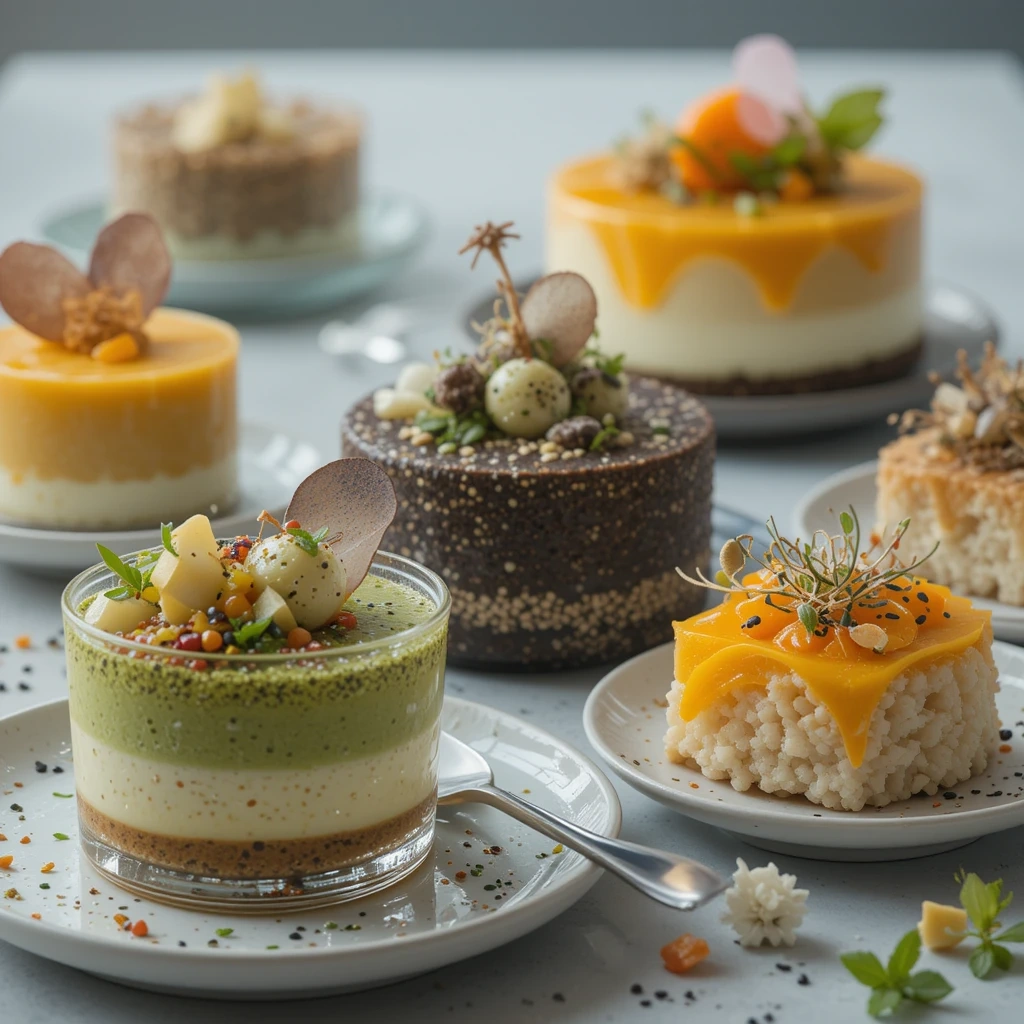
Must-Try Asian Desserts for Sweet Tooths
| Dessert | Origin | Main Ingredients | Flavor |
|---|---|---|---|
| Mochi | Japan | Sticky rice flour, sweet red bean fillingChewy, sugary | Chewy, sweet |
| Halo-Halo | Philippines | Shaved ice, sweetened fruits, beans, jellies, and leche flan | Colorful, sweet, refreshing |
| Taiyaki | Japan | Waffle or pancake batter, sweet red bean paste | Crispy, sweet |
| Mango Sticky Rice | Thailand | Sticky rice, ripe mango, coconut milk | Sweet, creamy |
For anyone with a sweet tooth, there are certain Asian desserts that simply cannot be missed. One of my all-time favorites is the Japanese dorayaki—fluffy pancakes filled with sweet red bean paste. I remember stumbling upon a small shop in Tokyo where they made these treats fresh daily.
The warm pancakes paired with the smooth filling created a comforting experience that I still crave today. Another must-try is the Filipino halo-halo, a colorful concoction of shaved ice topped with various ingredients like sweetened fruits, jellies, and leche flan. The first time I had halo-halo was during a summer trip to the Philippines, where the refreshing dessert provided relief from the heat.
Each spoonful was a delightful mix of textures and flavors, making it an unforgettable treat that perfectly encapsulated the spirit of Filipino hospitality.
Visit Veibrant Recipes’ Best Chocolate Desserts for a collection of decadent chocolate treats! From fudgy brownies to creamy truffles, you’ll find a variety of indulgent recipes to satisfy every chocolate craving. Whether you’re baking for a special occasion or simply treating yourself, these recipes are sure to impress!
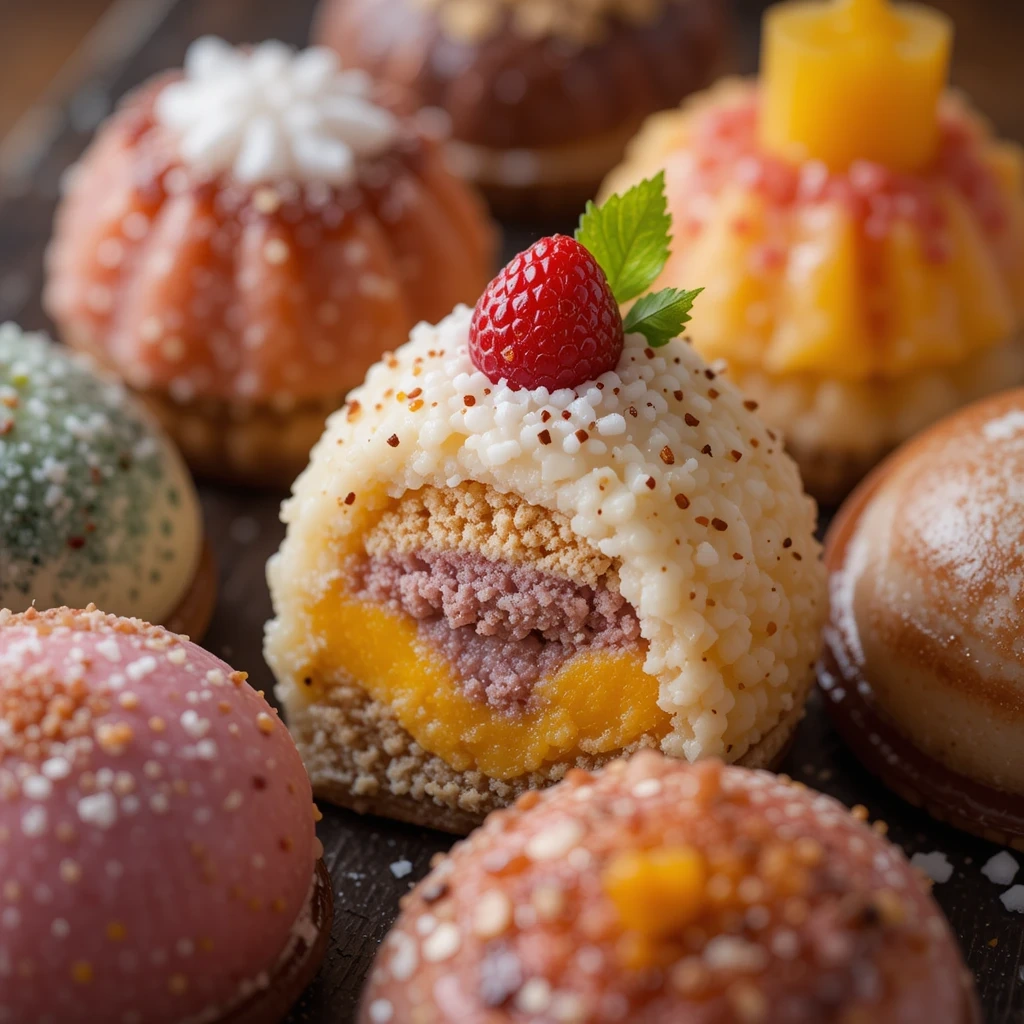
Exploring the Diversity of Asian Desserts
The diversity of Asian desserts is truly astounding, reflecting the myriad cultures and traditions across the continent. From the chewy texture of Korean tteok to the fragrant coconut puddings found in Malaysia, each dessert tells a story of its own. During my travels through Southeast Asia, I encountered an array of sweets that showcased local ingredients and culinary techniques.
One standout was kue cubir, an Indonesian cake made from rice flour and coconut milk, which I discovered at a local market. The soft, spongy texture combined with the subtle sweetness was unlike anything I had ever tasted. In addition to regional specialties, many Asian countries have their own variations of similar desserts.
For instance, while both Thailand and Vietnam have their versions of coconut sticky rice with mango, each offers a unique twist that reflects local tastes and preferences. This exploration has taught me that there is always something new to discover within the realm of Asian sweets, making each culinary adventure an exciting journey.
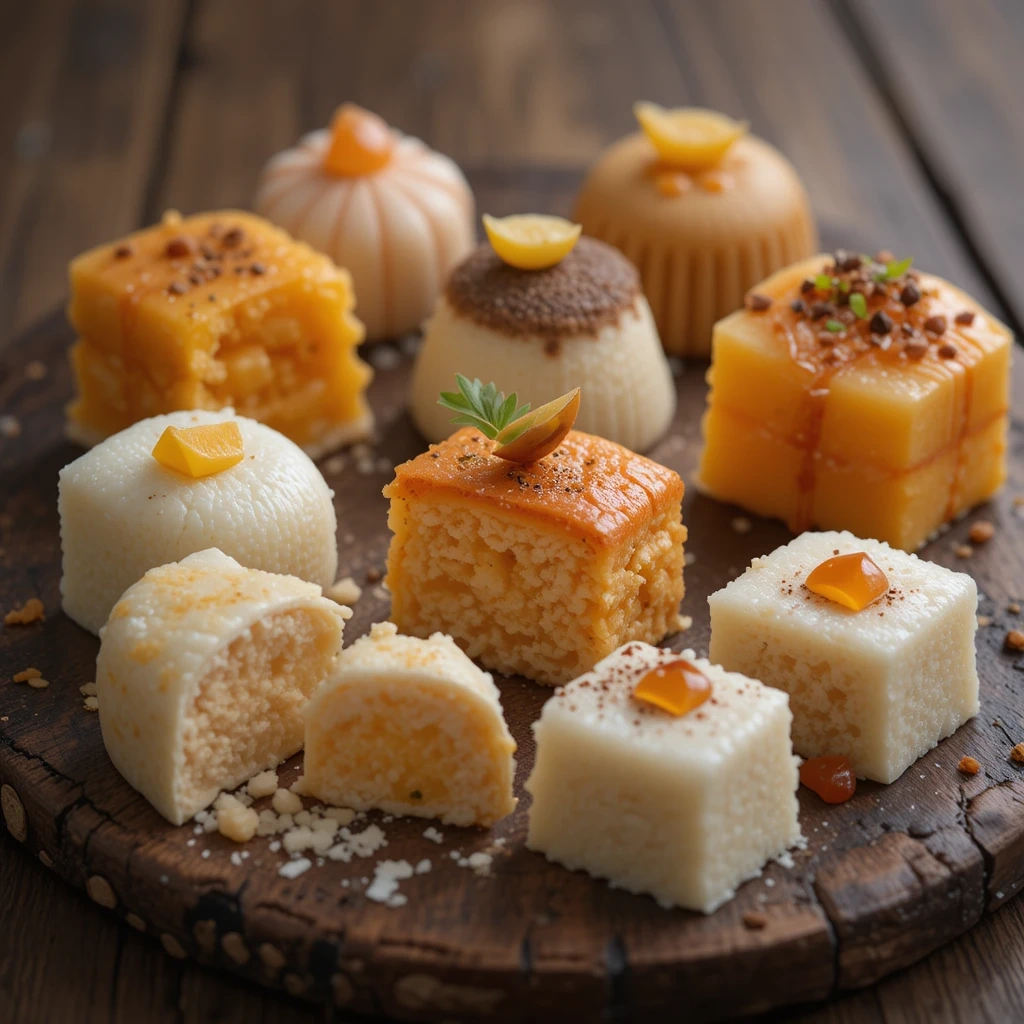
Tips for Making and Enjoying Asian Desserts at Home
Quality Ingredients Matter
When it comes to making Asian desserts, sourcing quality ingredients is crucial. Many traditional recipes rely on specific types of flour or sweeteners that can significantly impact the final product’s taste and texture. For instance, using glutinous rice flour instead of regular flour can make all the difference in achieving that chewy consistency in mochi.
Patience is a Virtue
Another important aspect of making Asian desserts is patience. Many recipes require time and precision to perfect. For example, when making Thai coconut pudding (kanom krok), allowing the batter to rest before cooking helps achieve that perfect balance between crispy edges and creamy centers.
Embracing the Process
Embracing the process and enjoying each step can turn baking into a rewarding experience rather than just a means to an end. By doing so, you’ll find that the journey of making Asian desserts becomes just as enjoyable as the end result.
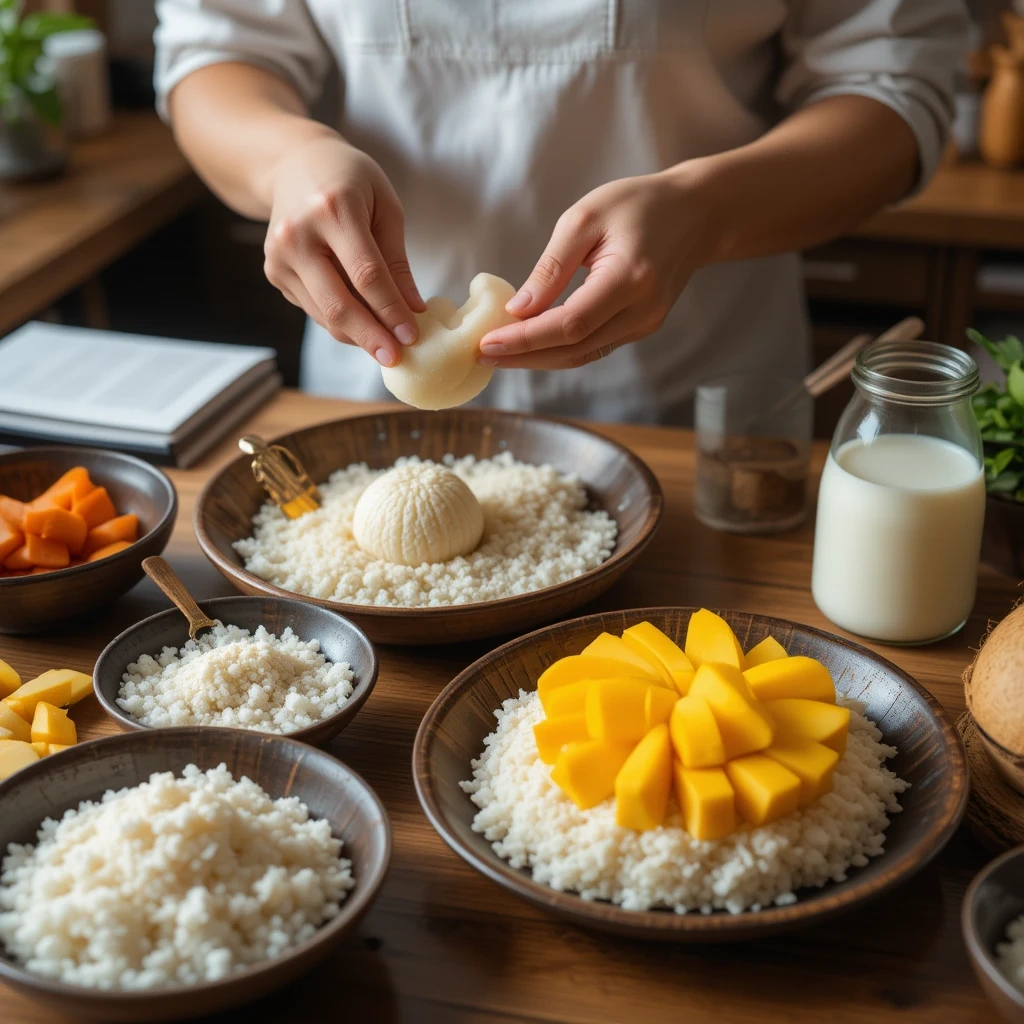
Health Benefits of Asian Desserts
While indulging in sweets is often seen as a guilty pleasure, many Asian desserts offer surprising health benefits due to their natural ingredients. For example, desserts made with fruits like mango or lychee provide essential vitamins and antioxidants while satisfying your sweet cravings. During my travels in Thailand, I discovered how mango sticky rice not only tasted divine but also provided a healthy dose of vitamins A and C from the fresh mango.
Additionally, many traditional Asian desserts incorporate ingredients like beans or nuts, which are rich in protein and fiber. When I tried red bean soup for the first time, I was pleasantly surprised by its wholesome qualities—it felt like comfort food that nourished both body and soul. By choosing desserts that prioritize natural ingredients over excessive sugars or artificial additives, we can enjoy our sweet treats while still being mindful of our health.
5 Common Mistakes to Avoid and Their Solutions
As someone who has dabbled in making various Asian desserts, I’ve encountered my fair share of mishaps along the way. One common mistake is not measuring ingredients accurately—especially when it comes to delicate recipes like macarons or mochi. I learned this lesson the hard way when my first batch of mochi turned out too sticky because I didn’t weigh my glutinous rice flour properly.
Investing in a kitchen scale can save you from such frustrations. Another pitfall is rushing through cooking times or temperatures. Many Asian desserts require precise cooking methods to achieve their signature textures.
For instance, when making steamed buns (bao), I once underestimated the steaming time and ended up with doughy centers instead of fluffy goodness. Taking your time and following recipes closely can make all the difference in achieving dessert perfection. In conclusion, exploring Asian desserts is an adventure filled with flavors, textures, and stories waiting to be discovered.
Whether you’re indulging in traditional treats or experimenting with modern twists at home, there’s no shortage of sweetness to enjoy across this diverse continent. So grab your whisk or head to your nearest dessert shop—your taste buds will thank you!
FAQs
What are some traditional Asian desserts?
Some traditional Asian desserts include mochi, red bean paste buns, mango sticky rice, and green tea ice cream. These desserts often feature ingredients such as rice, beans, fruits, and various types of sweetened pastes.
What are some modern twists on classic Asian desserts?
Contemporary takes on traditional Asian sweets feature matcha tiramisu, black sesame panna cotta, and yuzu cheesecake. These desserts incorporate traditional Asian flavors and ingredients into Western-style desserts.
What are some must-try Asian desserts for sweet tooths?
Some must-try Asian desserts for sweet tooths include Japanese cheesecake, Thai coconut ice cream, Korean bingsu, Filipino halo-halo, and Chinese egg tarts. These desserts offer a wide range of flavors and textures to satisfy any sweet craving.
What are the health benefits of Asian desserts?
Many Asian desserts incorporate ingredients such as fruits, beans, and grains, which can provide nutritional benefits such as fiber, vitamins, and antioxidants. Additionally, some Asian desserts use natural sweeteners like honey or fruit puree instead of refined sugar.
What are 5 common mistakes to avoid when making Asian desserts and their solutions?
Some common mistakes when making Asian desserts include using the wrong type of rice for sticky rice desserts, overcooking or undercooking ingredients, using low-quality ingredients, not following traditional techniques, and not balancing flavors properly. Solutions include using glutinous rice for sticky rice desserts, carefully following recipes and techniques, using high-quality ingredients, and adjusting flavors to achieve the desired taste.
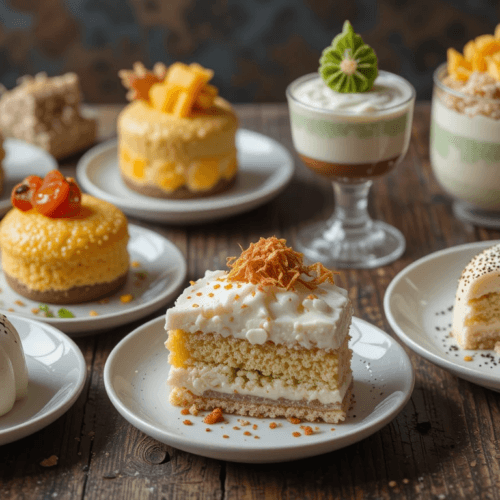
asian desserts
Ingredients
- Glutinous rice flour
- * Sweet rice
- * Mango
- * Coconut milk
- * Red beans
- * Matcha powder
- * Sugar
- * Assorted fruits lychee, etc.
- * Jelly
- * Leche Flan
- Pros:
- * Offers a diverse range of flavors and textures.
- * Many use natural ingredients.
- * Can be adapted to suit different dietary needs.
- * Visually appealing and culturally rich.
- * Opportunity to explore new culinary techniques.
- Cons:
- * Some recipes require specific ingredients that may be hard to find.
- * Can be time-consuming to prepare.
- * Some desserts are high in sugar.
- * Requires precision in measurements and cooking times.
- * May require specialized equipment.
Instructions
- (Since the document is a general overview, specific recipe instructions cannot be provided. To get instructions, consult specific recipes for the individual desserts you wish to make, such as mochi or mango sticky rice.)
- **Research Recipes:** Select the Asian dessert you want to create (e.g., mochi, mango sticky rice). Find a reliable recipe online or in a cookbook.
- **Gather Ingredients:** Source high-quality ingredients, paying attention to specific types of flour, rice, or sweeteners.
- **Prepare Components:** Follow the recipe instructions for preparing individual components like fillings, doughs, or sauces.
- **Assemble and Cook:** Assemble the dessert according to the recipe, paying close attention to cooking times and temperatures.
- **Garnish and Serve:** Garnish the dessert with traditional toppings or modern twists, and serve immediately or chill as required.

